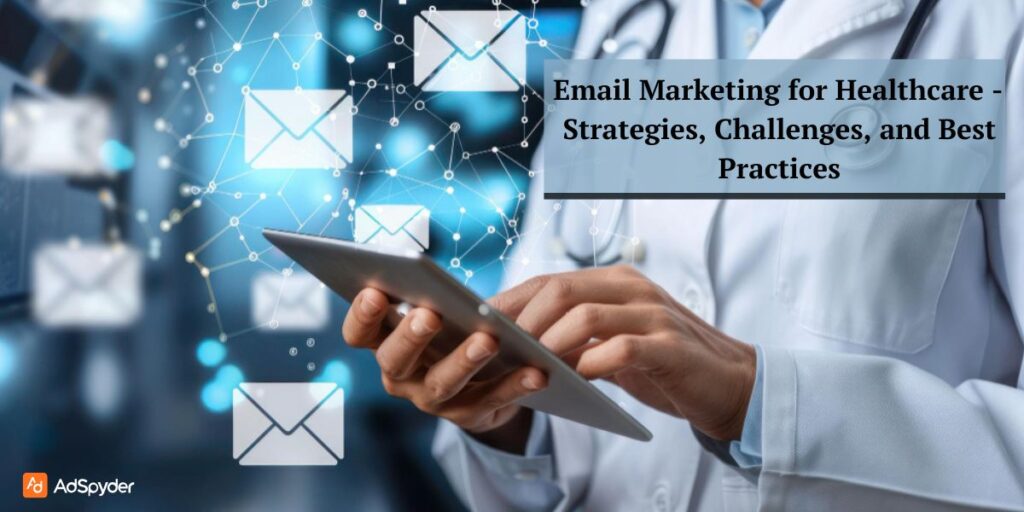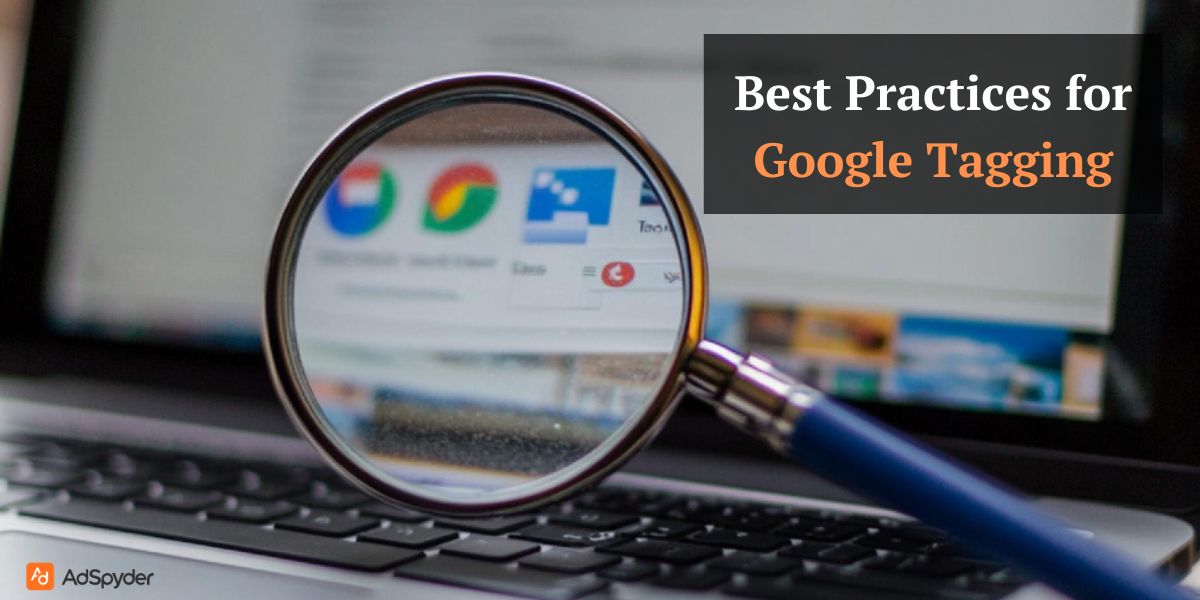Email marketing has emerged as a vital tool in the healthcare industry, allowing providers to enhance patient engagement, disseminate important information, and foster long-term relationships. In this blog, we will give you comprehensive knowledge about email marketing in the healthcare sector, and guide you to explore strategies and best practices for utilizing email marketing effectively. In this first part, we’ll focus on understanding the unique challenges of healthcare marketing, building and managing your email list, and crafting effective healthcare emails.
Ready to Elevate your Marketing Strategy?
Understanding the Unique Challenges of Healthcare Marketing
Healthcare marketing brings unique challenges to the table that require careful navigation to ensure success.
Regulatory Considerations
Healthcare marketing involves utmost care and following rules and regulations involving compliance with the Health Insurance Portability and Accountability Act (HIPAA). This regulation mandates strict guidelines, as the healthcare sector has most of the data related to patients thus mandating laws on how patient information is handled, including what can be communicated via email is crucial. To remain compliant:
- Use Encrypted Email Services: Ensure that any patient information shared via email is encrypted to protect sensitive data.
- Avoid Personal Health Information (PHI): Refrain from including any identifiable patient information in marketing emails unless explicit consent has been obtained from the patient and authority.
Understanding these regulations is important for protecting both the organization and the patients.
Building Trust with Patients
Patients must feel confident and trustworthy that their providers have their best interests at heart. Email marketing can foster trust in various ways that are discussed here:
- Providing Valuable Content: Share health tips, preventive care information, and updates about services to demonstrate your commitment to patient well-being.
- Being Transparent: Clearly state your purpose in communications and how patients can benefit from the information you provide.
Addressing Patient Education Needs
Patients often seek information to understand better their health conditions, treatment options, and overall wellness as everything is digitalized, and is preferable for patients to keep records in digital format. Email marketing allows healthcare providers to:
- Educate Patients: Use email to send informative articles, videos, and infographics that help patients make informed decisions about their health. Try sharing motivational content to convince them to work on their health.
- Promote Health Literacy: Share email content that is in simple English words as it is necessary to simplify complex terminology to ensure that patients understand the information being communicated.
By addressing these unique challenges, healthcare organizations can effectively engage their audience and establish meaningful connections.
Related: Building an Email Marketing Plan
Building and Managing Your Email List
Make an email list that has all the relevant demographics in it as this will be the foundation of successful email marketing. To give you a brief idea about how to build a robust email list effectively let’s see:
Strategies for Collecting Patient Emails
- In-Office Sign-Ups:
- Encourage patients to sign up by offering them some discounts or any other creative banners showing the ease of accessing their report and booking for any medical assistance during their visit. Provide sign-up forms at the reception desk or on tablets to make the process seamless.
- Patient Portals:
- Utilize patient portals to collect emails. Educate and aware patients to opt-in for email communications when they register or update their information online.
- Online Forms:
- Create user-friendly online forms on your website where visitors can subscribe to your newsletter or updates. Highlight the benefits of signing up, such as receiving exclusive health tips or reminders for annual check-ups.
Importance of Maintaining a Clean and Updated Email List
Regularly update and keep a clean record of the email list to ensure its effectiveness:
- Regularly Remove Inactive Subscribers: Periodically clean your list by separating the contacts who haven’t engaged in a while. Maintain those contacts for retargeting and if they still don’t respond then remove them. This will improve your engagement rates and help maintain your sender reputation.
- Update Contact Information: Encourage subscribers by informing them verbally or through messages to keep their contact information up to date. Include links in your emails for easy updating.
Segmenting Your Audience for Targeted Messaging
Segmentation allows you to customize messages to target specific groups of people within your audience, this enhances your chances of being able to connect to relevant groups of people improving engagement:
- Demographic Segmentation:
- Segment your list by demographics. Target demographics like age, gender, or location to send particular content that resonates well. For instance, you might send different health tips to younger patients versus older adults.
- Behavioral Segmentation:
- Depending upon the behavior of the patient you can analyze and create a segment based on appointment history, what services they prefer or how frequently they seek medical attention. For example, patients who frequently visit for check-ups may benefit from different content than those who only visit for acute issues.
- Interest-Based Segmentation:
- You can differentiate patients based on their interests by putting in a questionnaire while signing up that specifies their areas of interest. Include Topics like preventive care, chronic disease management, or wellness tips, enabling you to send more personalized emails to the patient depending upon what they have chosen while signing up.
By effectively building and managing your email list, healthcare organizations can foster deeper connections with patients and enhance their overall marketing effectiveness.
Visit Here: Email Marketing for Small Businesses
Crafting Effective Healthcare Emails
While crafting any digitalized content it is crucial to keep in mind that it’s good enough to lure your audience and is quality content delivering value. We will guide you on how to craft effective healthcare emails:
Types of Emails to Send
- Newsletters:
- Provide updates to patients about the latest health news, and trending practices through the newsletter. The essential point to keep in mind while preparing emails is that it should provide valuable insights to patients so that they are encouraged well to stay connected.
- Appointment Reminders:
- You can send reminders through automated email appointments. Include and highlight relevant information like date, time, location, and what to expect during the visit to the healthcare center.
- Health Tips:
- Tailoring regular health tips and health motivational content can enhance and educate patients increasing their engagement. For instance, a family practice might send parenting tips to young families, while a cardiology practice could share heart-healthy recipes.
Importance of Clear, Empathetic Language
When crafting emails, use clear and simple yet fun language. Healthcare can be a sensitive subject, so:
- Be Compassionate: Acknowledge patients’ concerns and feelings in your communication. This further shows the patients that you understand their problem and are willing to resolve thus gaining their trust.
- Avoid Jargon Content: Use easy-to-understand language that is polite yet simple. Avoid using medical terminologies that are usually used by doctors instead use elaborate sentences to explain them. The final goal should be making the information easy, accessible and relatable to the patients.
Structuring Content for Readability and Engagement
- Use Various Headings and Subheadings:
- Just like the easy or any other content make sure to highlight your heading and subheadings to make it easier to scan. Thus grabbing patients’ attention more towards valuable information quickly.
- Incorporate Visuals:
- Use images, infographics, and videos to enhance audience interaction and illustrate key points. Visual content conveys complex information in a more creative way to grab readers’ attention and keep them interested.
- Call-to-Action (CTA):
- Include clear Calls to Action that guide patients on what to do next. Whether to schedule an appointment, read content or participate in any kind of health survey, make the steps to follow clear, visible, and easy to follow.
Personalizing Your Email Campaigns
Personalization in email marketing also seems to be a key strategy for fostering engagement and building relationships with patients.
Benefits of Personalized Content for Patient Engagement
- Higher Engagement Rates:
- Customized emails that give a tint of personalization have been shown to increase open and click-through rates significantly. If the content is relevant to patient’s interests and is tailored to them, they are more likely to get better results.
- Improved Patient Satisfaction:
- Personalization enhances the patient experience by providing relevant information that meets their specific needs and interests.
Utilizing Patient Data for Tailored Messaging
- Gathering Data:
- Data can be gathered during various health events, such as registration, appointments, blood donation, or health campaigns, by designing a form where all the relevant questions are asked about their details and their preferences regarding health.
- Behavior Tracking:
- Monitor patient interactions with previous emails and online behaviors. This data can help you tailor future communications based on their interests and engagement levels.
Examples of Personalized Emails
- Follow-Up Emails:
- After an appointment, send personalized follow-up emails thanking patients for their visit and providing relevant information based on their consultation. Also, send follow-up reminders for the next visits.
- Health Milestones:
- Recognize important milestones in patients’ health journeys, such as their birthdays, or emails thanking them after completing a year of connecting with your organization, with personalized content and tips to stay healthy and eat healthy foods.
Ensuring Compliance and Privacy
Ensure your email content meets all the rules and regulations led down by the healthcare sector and keep patients’ privacy paramount while gathering any information through email marketing.
Overview of HIPAA Regulations Related to Email Marketing
HIPAA regulates the use of patient information to protect privacy. To give you an idea about it let’s look into some key considerations:
- Obtain Consent:
- Always obtain explicit consent from patients before sending any emails. Ensure transparency with patients and convey to them how your sign-up form data will be used.
- Secure Communication:
- Use secure email services that comply with HIPAA regulations. Use encrypted email as this will safeguard any sensitive information that might become hindrance with the compliance later.
Best Practices for Protecting Patient Information
- Limit PHI in Emails:
- Only if personal health information is necessary to share with the patient then only share it through email in a secure manner unless avoid sharing any such information.
- Regular Training:
- Train your staff on HIPAA regulations and best practices for handling patient data, ensuring everyone understands the importance of privacy and compliance.
Consent and Opt-In Strategies for Email Communication
- Clear Opt-In Processes:
- Make the opt-in process easy for your patients while informing them clearly what kind of content they can expect to receive. This will build their trust in you thus giving you enhanced open-to-click rates.
- Easy Opt-Out Options:
- Always include a simple opt-out option in your emails to allow patients to unsubscribe easily. This gives easy options to patients who are not interested as well as shows them that you respect their decision.
Measuring Success and Analyzing Performance
An easy way to analyze your performance is by tracking them for your email campaigns. This will allow you to look into the trends and behavior of your patients for better optimization for future strategies.
Key Performance Indicators (KPIs) for Healthcare Email Campaigns
- Open Rates:
- Measuring the number of open rates i.e. number of recipients that initiated to open an email. A higher open rate indicates that your subject lines and sending times are effective.
- Click-Through Rates (CTR):
- Look thoroughly to know how many recipients click on links within your emails. This metric tells you how effective, engaging as well as relevant your content is.
- Conversion Rates:
- Track how many recipients take the desired action, such as scheduling an appointment or completing a survey. This indicates the effectiveness of your CTAs.
- Unsubscribe Rates:
- Regularly look into the data to analyze the percentage of recipients who opt out of your email list. As with time people’s preferences change. If there are more unsubscribe rates that means there are some issues with your content and you need to change your approach.
Check Out: Email Marketing for Restaurants
Tools for Tracking and Analyzing Email Performance
- Email Marketing Platforms:
- There are various platforms available that provide building analytics trackers that not only help you with your email marketing but also can show regular data on the dashboard. A few of them are Mailchimp, Constant Contact, and HubSpot.
- Google Analytics:
- Integrate your email campaigns with Google Analytics to track how email traffic impacts your website, providing insights into user behavior post-click.
Adjusting Strategies Based on Data Insights
- Identify Trends:
- Regularly review your KPIs to identify key trends over time. As with time, content and targeting preferences and interests may change.
- For example, if certain types of content consistently receive high engagement, consider focusing on those topics more. Identifying what works best for you is an essential factor when deciding on your performance and optimization strategy.
- A/B Testing:
- Try different subject lines, play with creative eye-catching formats, and send times to see what resonates best with your audience. For example, people prefer looking at their email during their holidays or weekends try sending them during that time. Use A/B testing to improve your strategies based on actual data.
Following Up and Nurturing Patient Relationships
Effective follow-up communication is crucial, as this will help you foster good relationships with the patients. Also, this will show your efforts thus compelling them to respond.
Importance of Post-Appointment Follow-Ups
- Thank-You Emails:
- Send personalized thank-you emails after appointments, expressing appreciation for their visit and reinforcing the importance of their health.
- Health Reminders:
- Use follow-up emails to remind patients of follow-up appointments, lab results, or preventive screenings they may need. As sometimes reminders of something patients are looking for.
Strategies for Ongoing Patient Engagement Through Email
- Regular Health Tips:
- Continue to provide valuable and trending health tips. Try sending educational content tailored to patients’ needs and interests. This keeps your practice top-of-mind and promotes ongoing engagement.
- Survey Invitations:
- Use surveys to get input on patient satisfaction and potential areas for development. Gather the feedback and use them to enhance your services and also patient experience for the long term.
Explore Now: Email Marketing for IT Services
Using Surveys and Feedback to Improve Services
- Collecting Patient Feedback:
- Push and encourage patients to share suggestions for improvement and regarding their personal experience through surveys. This can be done either by email surveys or by forms during their visit. This shows that you respect their points of view and are dedicated to enhancing medical care.
- Implementing Changes:
- Act on the feedback received. Communicate any changes or improvements based on patient input to show that their voices matter.
FAQs
Utilization of email marketing in healthcare will enhance patient engagement, provide them with valuable information, help them keep track of reports in one place i.e. their email as well as foster long-term relationships.
To create a robust email list in healthcare you can use various ways first would be using in-office signups, whenever patient visits encourage and gather the information, patient portals can also be one of the platforms to get email effectively. Another way will be offering them incentives for sign-ups.
Different types of emails that can be sent to patients can be newsletters, appointment reminders to remind the patient of their upcoming visit, emails related to health tips to encourage them to eat well and exercise to be healthy, and follow-up emails.
To ensure compliance with the Health Insurance Portability and Accountability Act which regulates laws for security in the healthcare sector in email marketing make sure to obtain consent from the patients. Use secure email services, and avoid including any personal health information in marketing emails.
Key KPIs like open rates, click-through rates, conversion rates, and unsubscribe rates decide the success of email campaigns. If there are more open rates as well as fewer unsubscribers means email content is good enough and similar content needs to be promoted in the future as well.
You can always tailor your content according to the patient data, based on what age group you are targeting, their interests and past interactions.
Follow-ups reinforce patient engagement, they also provide reminders for patients regarding their appointments and show appreciation towards their response, thus improving overall enhancement as well as retention.
Conclusion
Email marketing is one of the best strategies for healthcare providers looking to enhance patient engagement, education, and retention. As it is the traditional digital marketing method it gives benefits to both its users as well the person promoting it. By understanding the unique challenges of healthcare marketing, building and managing a targeted email list, crafting effective emails, personalizing content, ensuring compliance, measuring success, and following up with patients, healthcare organizations can foster meaningful relationships and drive positive health outcomes.
Implementing these strategies will not only improve patient communication but also contribute to the overall success of your practice in an increasingly digital world.




